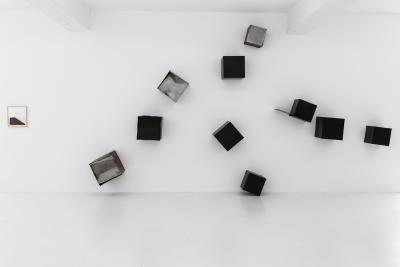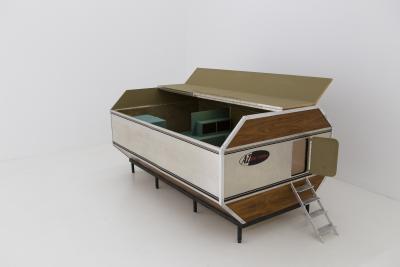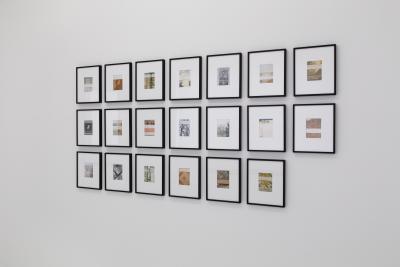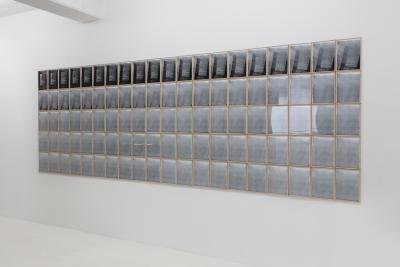Ordne und finde mit
Group Show
27.06.2015 - 23.08.2015
After a seven-year stay, the Sammlung Philara will leave its rooms in Reisholz for a new home on Birkenstraße in Flingern at the end of the year. The last presentation of the collection this year in the former Leitz factory is a homage to the building and its former function. The title of the exhibition likewise refers to the company’s old slogan, “Ordne und finde mit Leitz,” which stands on the outer, western facade of the building. In 1896 Louis Leitz developed the “Registrier-Sammelmappe A,” a ring binder which was released alongside a paper punch which punched holes at an eight centimeter interval. Since then, this product has become synonymous with everyday order and archives, both in offices and homes.
The works presented in Ordne und finde mit sketch visual and conceptual ordering systems and/or draw on design elements from the administrative context. Linguistic, urban, and architectural ordering systems make up the patterns of our everyday lives and are to be found in the banal. But through the analogy of systems, incommensurabilities emerge.
Fiona Banner and David Renggli are occupied with the translation of forms into one’s own perceptual system. Fiona Banner uses language to in order to reformat images from films, whether war films or pornos, into her own linguistic sequences. The subsequent pyramidal form of Group is thus coherent with its content. David Renggli, on the other hand, translates poses from antique sculptures or fashion models into reduced steel contours. Several crossword puzzles are woven together into a photographic mosaic in Natalie Czech’s work, in which the arrangement of black boxes and empty fields creates an ornamental, all-over pattern. Katja Strunz’s work, by contrast, pursues an entropic structure. The black steel boxes oppose a logical structure and tumble along the wall. Andrea Zittel conceives of a situation without the usual parameters and asks what our life would like without a temporal order. In her series A-Z: Time Tunnel, she sketches the utopia of a timeless capsule. What structure would the rhythms of our lives follow if they were released from a temporal system? In The Work of Art in the Age of Its Technological Reproducibility (1935), Walter Benjamin describes how works of art lose their aura as soon as they become reproducible and points towards the subsequent transformations in art and its reception. Timm Ulrichs copied the Suhrkamp edition of the essay one hundred times, up to the hundredth copy of the copy, at which point it dissolves into abstract fragments. Ceal Floyer similarly makes recourse to an everyday instrument. She empties the grey markers from thirty-two multicolored marker packs into sheets of blotting paper. Instead of uniform grey circles, a typology of various color spectrums and gradients emerges. In his project Facades, Georgi Stanchev archives Bulgaria’s urban spaces from the seventies, eighties, and nineties. These facades originally decorated with propaganda and advertisements have been partially stripped by weathering or patchily covered over by renovations in some parts. What emerges is an archive of unintentional overlaps that oscillates between collage and documentation.

Katja Strunz
steel, paper
dimensions variable
Courtesy the artist & Philara Collection
Foto: Maria Litwa

Andrea Zittel
mixed media
99 x 122,6 x 203cm
Courtesy the artist & Philara Collection
Foto: Maria Litwa

Georgi Stanchev
C-Prints
each 33 x 27cm
Courtesy the artist & Philara Collection
Foto: Maria Litwa

Timm Ullrichs
photocopy, wood frames
each 31 x 21cm
Courtesy the artist & Philara Collection
Foto: Maria Litwa